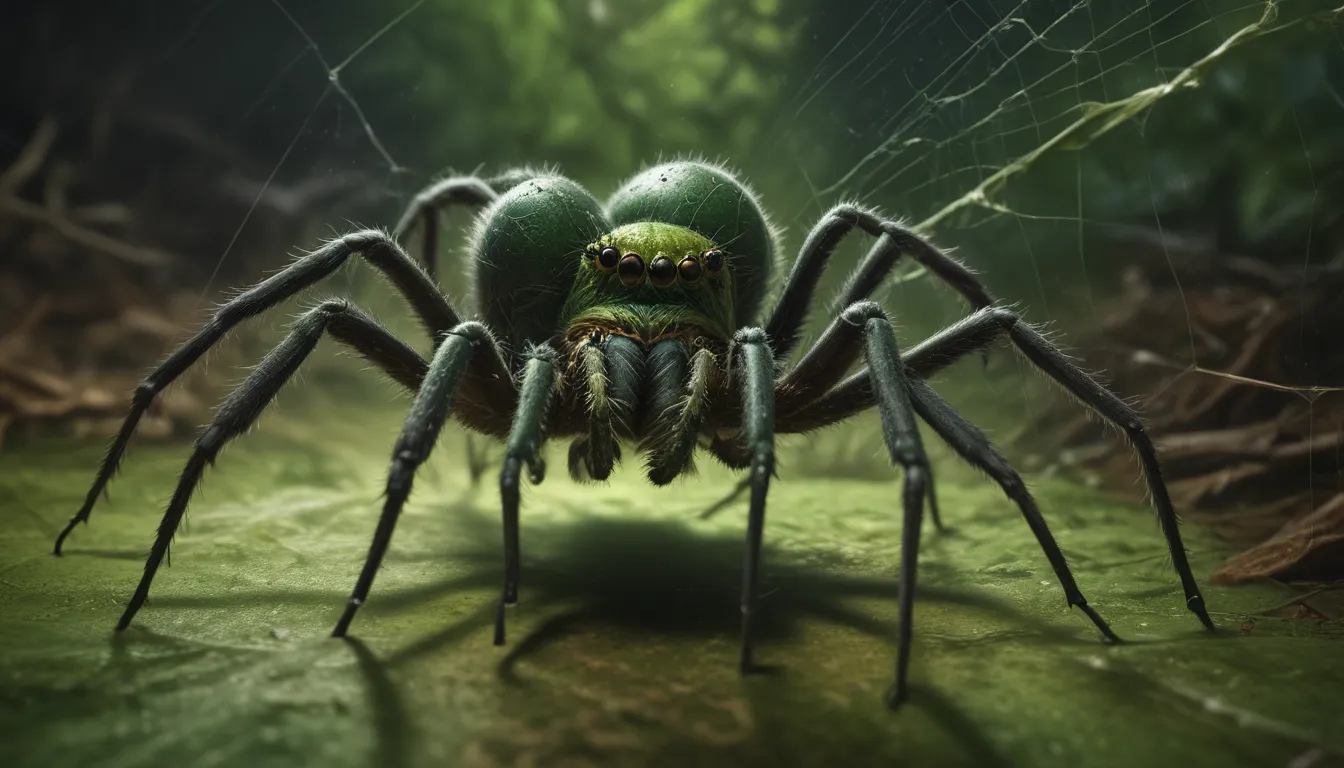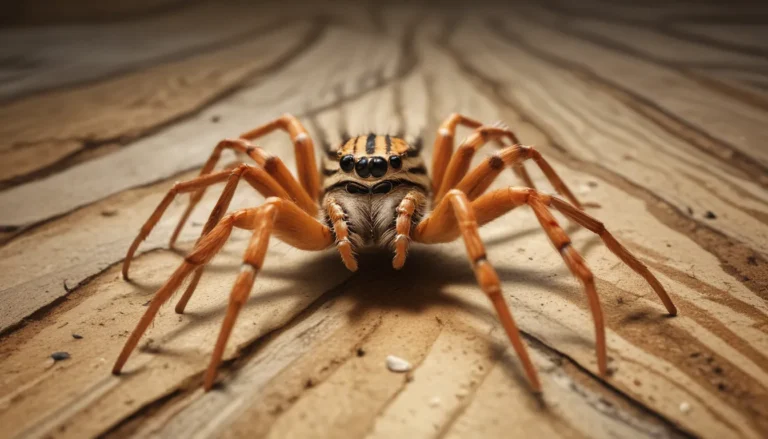The pictures we use in our articles might not show exactly what the words say. We choose these pictures to make you interested in reading more. The pictures work together with the words but don’t take their place. The words still tell you the important facts.
Have you ever wondered about the mysterious world of the Green-fanged Tube Web Spider? This captivating creature, known scientifically as Segestria florentina, is a fascinating arachnid that captivates both researchers and nature enthusiasts. With its vibrant green fangs, unique web-spinning abilities, and important ecological role, this spider species has a lot to offer in terms of intrigue and fascination.
Exploring the World of the Green-fanged Tube Web Spider
Let's embark on a journey into the realm of the Green-fanged Tube Web Spider and uncover nine intriguing facts about its behavior, appearance, and ecological significance. From its specialized hunting techniques to its maternal care instincts, there is much to learn and appreciate about this enigmatic arachnid. Whether you have a fear or fascination for spiders, diving into the world of the Green-fanged Tube Web Spider will deepen your understanding of the wonders of the animal kingdom.
Understanding the Unique Green Fangs
One of the most striking features of the Green-fanged Tube Web Spider is its vibrant green fangs. Unlike other spider species that typically have fangs of a different color, this arachnid stands out with its distinct green hue. The green coloration of its fangs is attributed to a unique pigment called biliverdin, which gives them their eye-catching appearance.
Unveiling Their Hunting Skills
These spiders are skilled hunters, adept at constructing tube-shaped webs in dark and hidden corners where they patiently wait for their prey. Their hunting techniques involve immobilizing unsuspecting insects with venom and swiftly consuming them. The Green-fanged Tube Web Spider's efficient predatory strategies showcase their prowess as hunters in the animal kingdom.
Embracing the Night: Nocturnal Behavior
Primarily nocturnal creatures, Green-fanged Tube Web Spiders prefer to hunt during the night when their specialized night vision aids them in capturing prey in low-light conditions. During the day, they retreat into their tube-shaped webs, remaining hidden from predators and conserving energy for their nightly hunting expeditions.
Discovering Their Geographic Distribution
Native to Europe, particularly countries like Italy, France, Spain, and the United Kingdom, Green-fanged Tube Web Spiders have also been introduced to North America, where they have established populations. Their adaptability to different regions contributes to their widespread distribution across various habitats.
Marveling at Their Impressive Size
With a body length ranging between 15 to 20 millimeters, the Green-fanged Tube Web Spider is considered a medium-sized species. Their elongated bodies, combined with their vibrant green fangs, make them a visually striking presence in their natural habitats.
Unveiling Their Venomous Nature
Possessing venom potent enough to immobilize prey and deter potential threats, the Green-fanged Tube Web Spider's bite may cause mild pain and irritation similar to a bee sting. While their venom is not considered harmful to humans, it serves as a crucial tool for their survival and hunting success in the wild.
Embracing Maternal Care
In a fascinating display of maternal instinct, the female Green-fanged Tube Web Spider exhibits care for her offspring. After mating, she lays eggs and wraps them in a silky cocoon, diligently guarding and protecting them until the spiderlings hatch. This nurturing behavior ensures the survival of the next generation.
Understanding Cannibalistic Tendencies
During the mating process, the female Green-fanged Tube Web Spider may exhibit cannibalistic tendencies by consuming the male post-mating. This behavior serves as a source of nutrition for the female as she prepares to lay her eggs and care for her offspring, showcasing the complexities of arachnid reproductive strategies.
Emphasizing Ecological Importance
As efficient predators, Green-fanged Tube Web Spiders play a vital role in balancing ecosystems by regulating insect populations. By controlling the numbers of various insects, these spiders contribute to the overall health of their habitats, highlighting their ecological significance in nature.
Conclusion: Appreciating the Marvels of Nature
In conclusion, the Green-fanged Tube Web Spider is a remarkable creature with intriguing characteristics that warrant further exploration and study. From their striking green fangs to their unique hunting techniques and maternal instincts, there is much to admire and learn about these enigmatic arachnids. As researchers continue to uncover new insights about this species, we can anticipate discovering even more captivating facts about the Green-fanged Tube Web Spider in the future. So, next time you encounter this spider in the wild, take a moment to appreciate its beauty and the essential role it plays in maintaining the delicate balance of our ecosystems.
Frequently Asked Questions
Q: Why are the fangs of the Green-fanged Tube Web Spider green?
A: The green coloration of their fangs is due to the presence of a unique pigment called biliverdin, giving them their distinct appearance.
Q: Are Green-fanged Tube Web Spiders venomous?
A: Yes, they are venomous, with potent venom used for hunting and self-defense that is relatively harmless to humans.
Q: How do Green-fanged Tube Web Spiders hunt?
A: These spiders create tube-shaped webs with sticky silk lines to trap their prey, showcasing their efficient hunting techniques.
Q: Where can Green-fanged Tube Web Spiders be found?
A: Predominantly inhabiting rainforests of Australia and New Guinea, these spiders thrive in moist environments with dense vegetation.
Q: Do Green-fanged Tube Web Spiders pose a threat to humans?
A: While venomous, these spiders are timid and only bite in self-defense when threatened, posing minimal risk to humans.
Q: What is the lifespan of Green-fanged Tube Web Spiders?
A: On average, these spiders live for about two to three years, with variations in lifespan observed among individuals.
Q: Are Green-fanged Tube Web Spiders endangered?
A: Limited information is available on their population status, requiring further research to assess any conservation concerns.
Q: Can Green-fanged Tube Web Spiders be kept as pets?
A: Due to their specific habitat requirements and venomous nature, these spiders are not commonly kept as pets and are more suited for observation in their natural environments.
Q: How can I differentiate Green-fanged Tube Web Spiders from other species?
A: The vibrant green fangs, slender body shape, and larger size distinguish Green-fanged Tube Web Spiders from other spider species.
Wrapping Up
As we conclude our exploration of the Green-fanged Tube Web Spider, we invite you to continue discovering the wonders of the animal kingdom and appreciate the intricate beauty of these fascinating arachnids. By understanding and respecting the vital role these spiders play in maintaining ecological balance, we can foster a deeper connection and appreciation for the diverse creatures that share our planet. Join us in celebrating the marvels of nature and embark on a journey of discovery and learning as we unravel the mysteries of the Green-fanged Tube Web Spider together.






